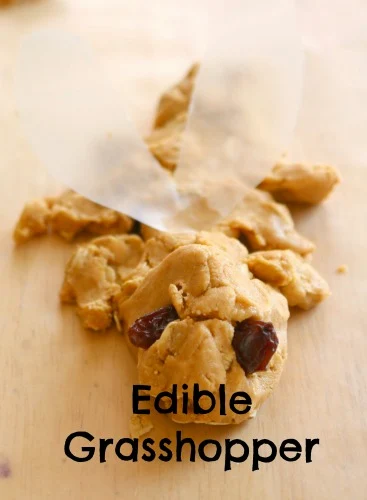We finally started to break away from the Pilgrims in Heart of Dakota's Beyond Curriculum and were very gently introduced to the pioneers and colonial life in Units 21-22. I've been pretty bad at taking photos of our "everyday" type tasks we do, but I did manage one or two decent photos sharing some of the neat activities and projects we did during these two units.
Unit 21- We read about the French Pioneers landing in Detroit; we read that they traded with the Indians for items such as their canoes.
For an art project, we made a salt dough canoe. After it dried, my son had fun painting it all sorts of colors!
For Science, we learned that birds have different kinds of beaks; their beaks tell us a lot about the kind of food they eat and need.
I set out different types of food and different tools to represent the different kinds of beaks.
A tweezer is similar to a woodpecker's beak and is useful for pulling up little insects.
A clothespin is like a sparrow's beak and is useful for picking up and crunching seeds.
A slotted spoon is like a pelican's beak and is best for scooping up food from the water.
And, an eyedropper is like a hummingbird beak and is useful for drinking nectar from flowers.
I set out different types of food and different tools to represent the different kinds of beaks.
A tweezer is similar to a woodpecker's beak and is useful for pulling up little insects.
A clothespin is like a sparrow's beak and is useful for picking up and crunching seeds.
A slotted spoon is like a pelican's beak and is best for scooping up food from the water.
And, an eyedropper is like a hummingbird beak and is useful for drinking nectar from flowers.
Our week was filled with more reading, new spelling words, mapping, and copywork!
In Unit 22 we were introduced to Benjamin Franklin and colonial life in Philadelphia and Boston.
The only picture I managed to get was of our grasshopper.
In history we read of a coppersmith, Deaon Drowne, who loved creating and once made a very large grasshopper. Interestingly enough it became the weather vane on top of Faneuil Hall in Boston. In fact, we googled it and it is still there today!
In history we read of a coppersmith, Deaon Drowne, who loved creating and once made a very large grasshopper. Interestingly enough it became the weather vane on top of Faneuil Hall in Boston. In fact, we googled it and it is still there today!
For our Science activity, we learned that grasshoppers are insects. They have 6 legs and 3 body parts: head, thorax, and abdomen. The creator of Heart of Dakota must know that adding food into a lesson is a great way to encourage learning because using a recipe in the manual, we made our own edible grasshopper! Now that is one we didn't mind eating ; )
I don't have anything to share for Unit 23, but we'll be updating you on Unit 24 and more soon!



